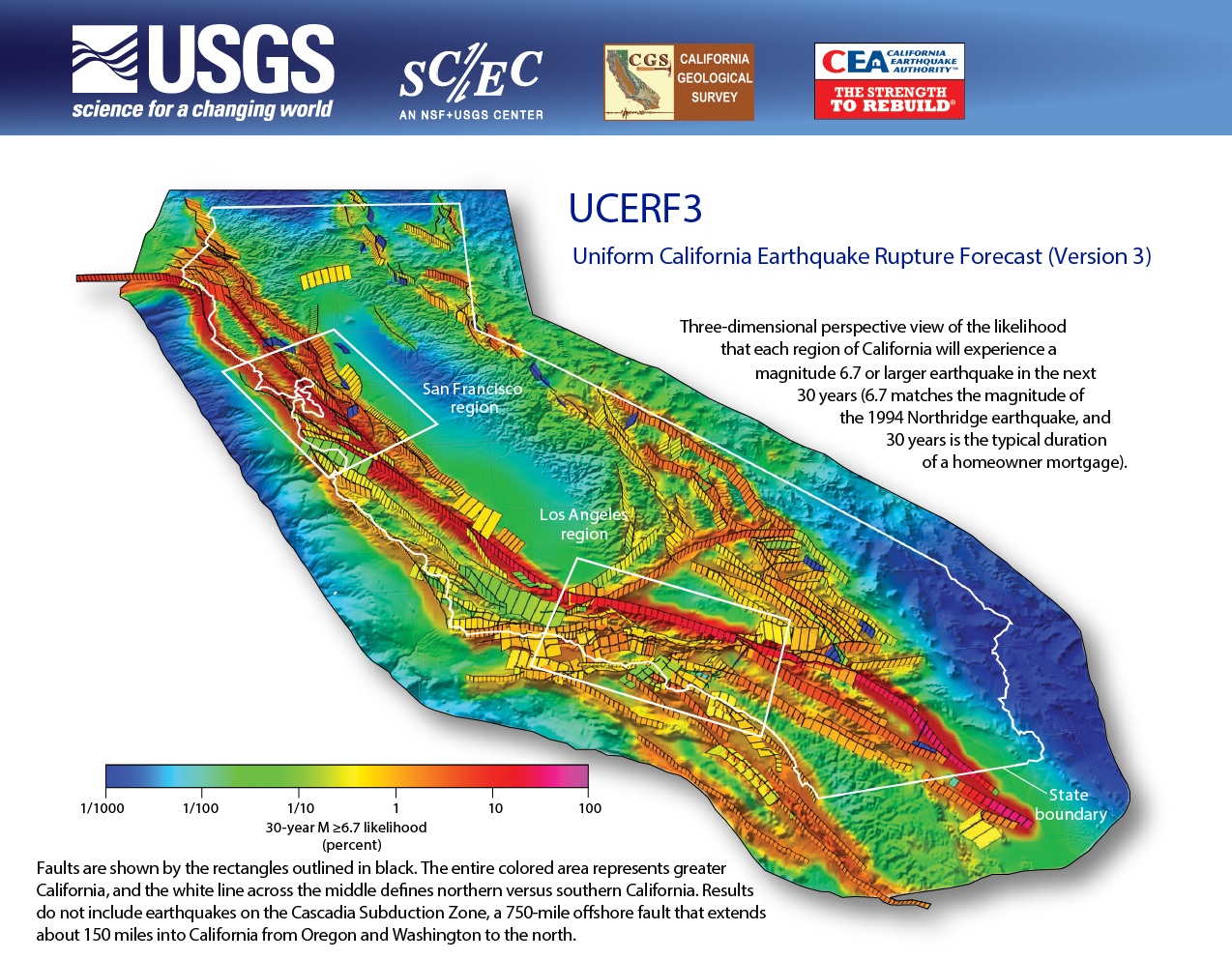Connecting state and local government leaders
Here’s another reminder that destruction is always around the corner in Southern California.
During the 1990 made-for-TV movie, “ The Great Los Angeles Earthquake ,” the U.S. Geological Survey seismologist played by Joanna Kerns of “Growing Pains” fame makes a prediction that a giant earthquake with at least a 7.0 magnitude would strike the nation's second-largest city in 72 hours following a succession of curious seismic activity around the region. It raised her concerns about a forthcoming major quake, possibly along the Elysian Park Fault, which sits dangerously close to downtown Los Angeles.
While Los Angeles city officials try to keep the seismologist’s dire predictions under wraps, word leaks out thanks to Ed Begley Jr.’s character and the city is thrown into a frenzy. “I wanted a calm, organized response,” Kerns' character, Dr. Clare Winslow, says in response. “Do you have any idea what you may have started?”
And in true cinematic fashion, it’s too late.
Sure enough, around the movie’s two-hour mark, it’s the Elysian Park Fault—and not the more infamous San Andreas normally associated with the “Big One”—that ruptures with a magnitude 8.0 monster quake and an immediate aftershock. The major characters have to deal with various scenarios of life and death, just like in all disaster movies.
A high school auditorium caves in on a graduation rehearsal. A high-rise condominium elevator plunges to destruction. Bridges collapse as do plenty of buildings. A business executive who earlier declares how the skyscraper he’s in was built to survive a major quake, is, inevitably, thrown out the window by the force of the temblor. In an aftershock, debris rains down on the Hollywood Sign to complete the destruction montage.
“My God,” a city official says in the emergency operations center in the basement of City Hall. “It looks like our worst case scenario wasn’t our worst case.” (Of course, the situation gets even worse in Los Angeles and personnel in the emergency operations center are buried alive as fresh air begins to run out.)
Granted, that 1990 made-for-TV movie was fictional and not exactly based on seismological realities but some of the plot elements are especially interesting when you look at this week’s news out of Los Angeles. There’s a new bold “99.9 percent” prediction of a magnitude 5.0 quake in a fault zone east and southeast of downtown Los Angeles in the next two and a half years.
That prediction came from NASA’s Jet Propulsion Lab and is rooted in an analysis of previous quake activity along a system of faults thought to be responsible for a magnitude 5.1 quake last year in La Habra in Orange County.
The U.S. Geological Survey was quick to cast doubt on the methodology of the new report and the 99.9 percent prediction with USGS seismologist Lucy Jones , who is also an earthquake adviser to L.A. Mayor Eric Garcetti, saying, according to CBS Los Angeles:
“The claim that it’s such a high probability is made in a paper by one individual group of researchers,” Jones said. “The paper doesn’t document how they came up with that number so it’s impossible for us to even evaluate whether or not the statement has any validity, because they didn’t say why.”
(In March, the USGS and its research partners released the Third Uniform Earthquake Rupture Forecast , which revised estimates for the chance for certain areas on California to experience a major earthquake. Jones contends it is the "consensus model" for earthquake hazards in the state.)

But regardless of the scientific validity of the "99.9 percent" prediction in JPL’s report, this situation does serve as a reminder that the real “Big One” disaster scenario for Los Angeles might not necessarily originate on the better known San Andreas Fault.
Various faults around the L.A. area are capable of unleashing destruction on the city and its surrounding metropolitan area. In 1933, for instance, Long Beach and neighboring communities were hit by a magnitude 6.4 quake originating on the Newport-Inglewood Fault , which brought widespread damage, killed 115 people and injured thousands .
There were major L.A.-area quakes originating in or near the San Fernando Valley in 1971 and 1994. That damaging 1994 tremor , known today as the Northridge earthquake, took L.A. by surprise since it happened on a previously unknown blind-thrust fault under the city. (Such faults are less understood because they don’t rupture on the surface and are more difficult to study.) Fortunately, much of the Northridge quake’s energy was focused away from the center of Los Angeles.
It’s another blind-thrust fault, the Puente Hills thrust system , that has many seismologists worried. Not only is it believed that this fault system, which was discovered in 1999 and roughly stretches between Griffith Park in Los Angeles to the suburb of Whittier about 17 miles east of downtown L.A., could generate a magnitude 7.5 earthquake , but it would focus its destructive energy directly on downtown and other heavily populated areas of the metropolitan area to the south and west, as demonstrated in this visualization:
Predictions of deaths and injuries for such a Puente Hills scenario are far more scary than the “Big One” on the San Andreas Fault. A worst-case Puente Hills scenario could kill up to 18,000 people while the Big One on the San Andreas might only kill 1,800 people, according to some disaster scenarios.
The major difference is distance. Although the San Andreas Fault is capable of monster earthquakes, it is farther away from Los Angeles, so the intensity of the shaking will be less destructive in L.A. itself, though it all depends on localized geologic conditions. Softer soils tend to amplify shaking intensity. And with a Puente Hills scenario, the Christian Science Monitor noted last year that, “ the softer soil in the Los Angeles Basin would enhance a quake’s ripple effect like a stone in water .”
So a higher magnitude quake—or even a relatively smaller quake—on a fault directly under a heavily populated area like Los Angeles is a recipe for a catastrophic disaster.
And that is what makes a Puente Hills quake far more worrisome than some San Andreas quake scenarios, at least for Los Angeles itself. Even if an earthquake early warning system, which can send out alerts faster than certain seismic waves can travel through the ground , were fully operational for a future Puente Hills quake, it wouldn’t do much good for L.A. itself since the epicenter would be far closer to, or directly under, heavily populated areas. (In a Big One scenario originating on the San Andreas Fault, Los Angeles might get upwards of a 1-minute warning before the seismic waves reach the L.A. Basin because of the farther distance the likely epicenter will be from the city.)
What’s more unsettling: the Big One and a Puente Hills disaster are not the only worrisome earthquake scenarios that Los Angeles area faces. There are plenty more, from a replay of the 1933 Long Beach earthquake that destroys two of the nation's largest port facilities to a seismic event on the Hollywood Fault or the San Jacinto Fault Zone (the most active in Southern California ) or a localized tsunami that could be generated by an offshore quake .
The problem for the L.A. area isn’t necessarily being able to predict when a quake may or may not strike a particular area—it’s a problem of getting every response agency and every resident prepared for the inevitable next major quake, the destruction it will bring and the subsequent difficult recovery.
And while L.A. is better prepared than most cities to deal with earthquakes, it’s impossible to ever be truly ready. And unfortunately, that has a 100 percent certainty.
ALSO on Route Fifty :
Michael Grass is Executive Editor of Government Executive’s Route Fifty.

NEXT STORY: Bringing Some Clarity to Complex Regulatory Questions in Legal Weed States




